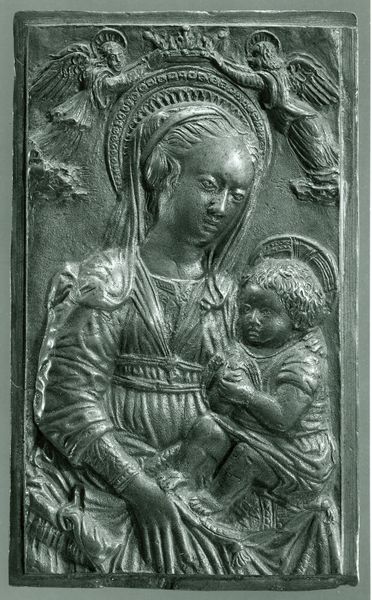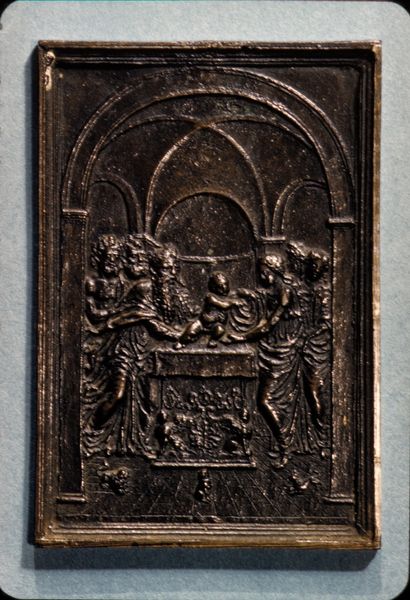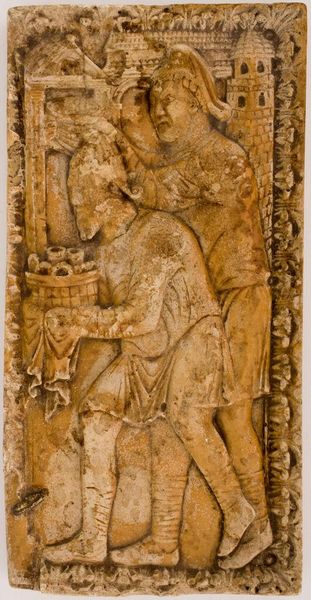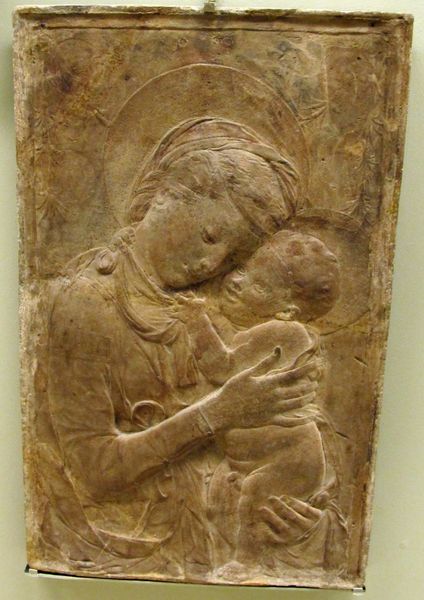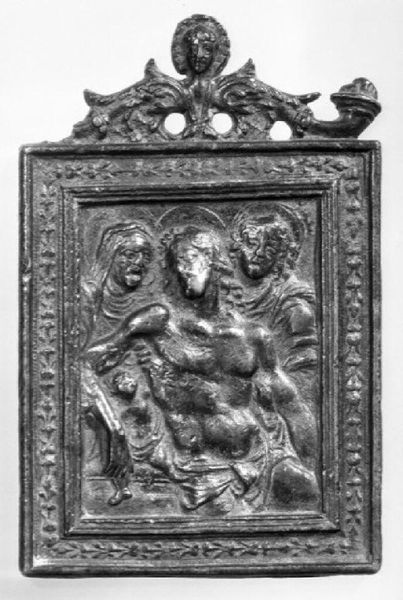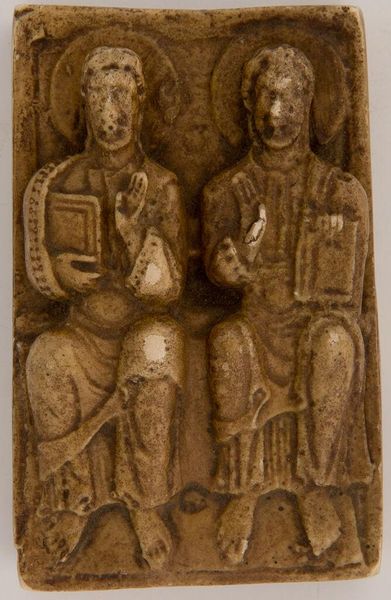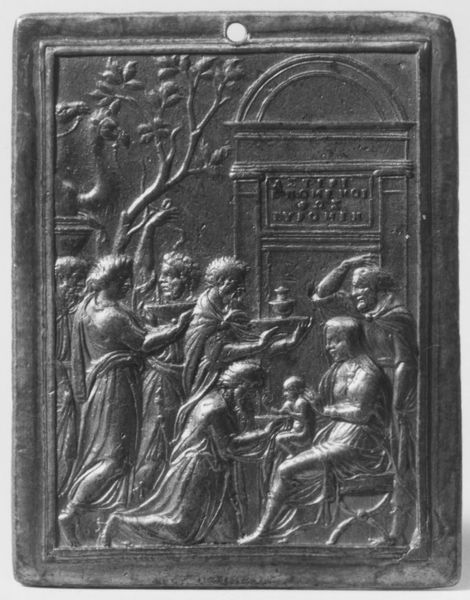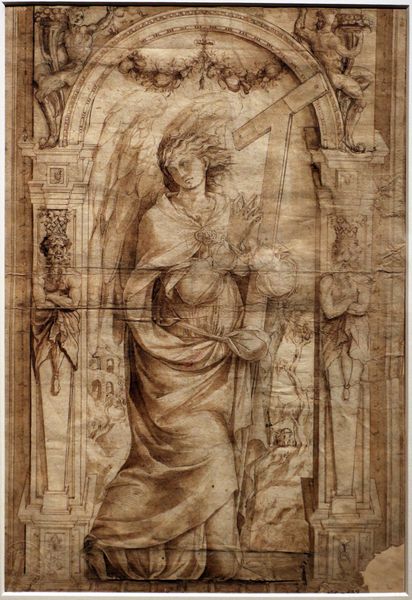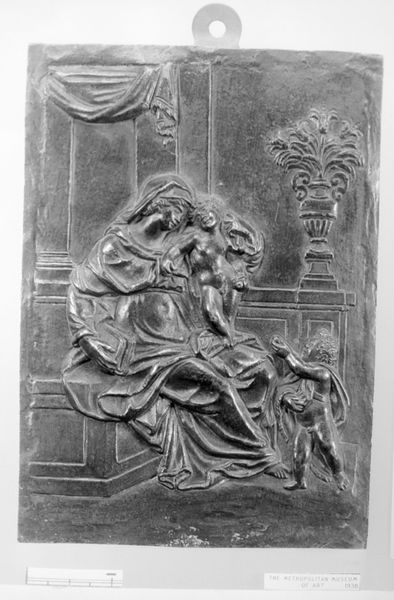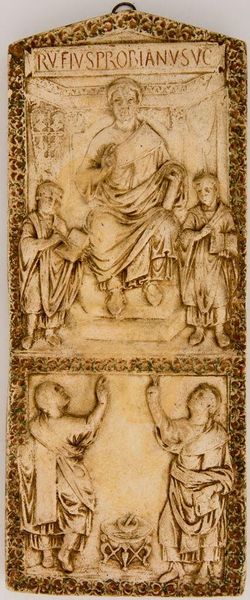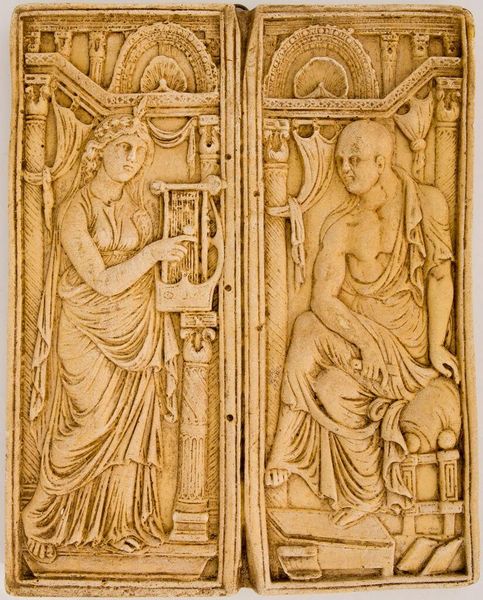
relief, bronze, sculpture
#
portrait
#
byzantine-art
#
medieval
#
sculpture
#
relief
#
bronze
#
figuration
#
sculpture
#
history-painting
#
miniature
Copyright: Orthodox Icons,Fair Use
Curator: So, here we have an intriguing bronze relief sculpture entitled "Virgin Mary on the Throne," dating back to around 1150. Editor: The use of bronze really stands out. It feels substantial and timeless, far removed from ephemeral materials. How does the choice of material impact its meaning? Curator: The bronze immediately directs our attention to the process of creation, doesn’t it? The labor, the mining, the smelting, the casting… it speaks volumes about the value placed on this icon. Bronze was a costly material in the 12th century. What do you make of the implications? Editor: So the precious nature of the materials and their crafting were crucial to convey the importance of the icon itself? It almost suggests that the very labor and cost invested mirrors the devotion. Were there social considerations involved in creating such work, who were the craftspeople involved in this sort of artwork? Curator: Precisely! We can ask, were the people that create the icons viewed as merely laborers or seen as creators or collaborators that give power to the icons? Whose interests did these objects serve and how? I encourage you to consider the systems and materials involved in its creation. It asks a lot about craftsmanship, its place in society and the function of art, challenging those divisions that separate so-called ‘high art’ from labor or craft. Editor: That's fascinating. It shifts the focus from simply the image to the broader network of production. It also brings a renewed level of appreciation for this sculpture, beyond its representation. Curator: Indeed. Considering the social and material conditions can really enrich our understanding, doesn't it? It helps us appreciate both its artistic and its historical significance.
Comments
No comments
Be the first to comment and join the conversation on the ultimate creative platform.
